Does Socializing Your Cat Reduce Aggressive Behavior?
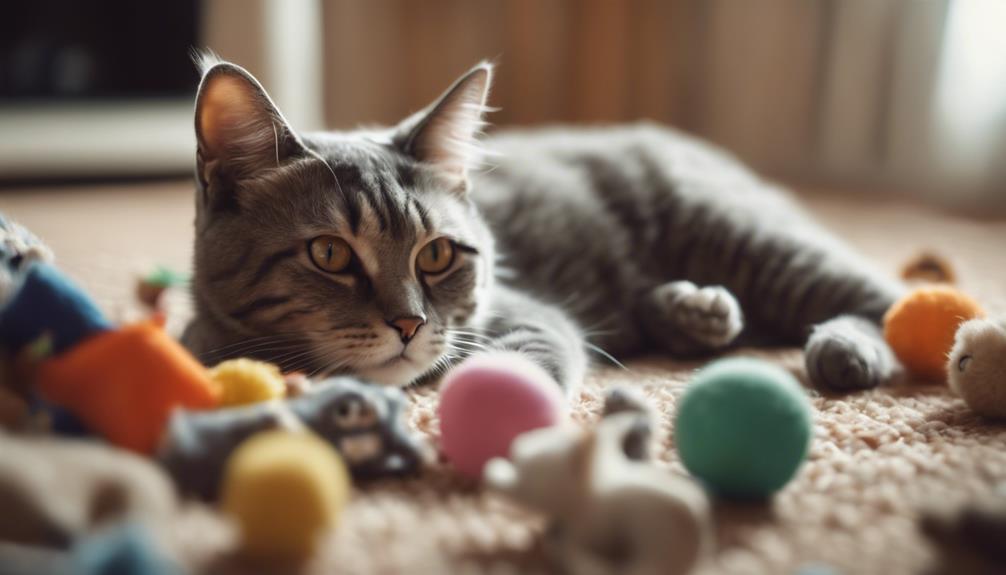
Socializing your cat can play a significant role in reducing aggressive behavior. Cats are social animals and benefit from interaction with humans and other animals. By providing opportunities for positive social experiences, such as playtime, grooming, and training, you can help your cat build confidence and develop better social skills. Additionally, socializing your cat can help prevent boredom, which is often a leading cause of aggressive behavior in cats. Overall, a well-socialized cat is more likely to exhibit friendly and non-aggressive behavior towards both humans and other animals.
Understanding Feline Aggression
Understanding feline aggression involves examining the various triggers and behaviors that contribute to aggressive tendencies in cats. Aggression management and behavior modification play crucial roles in addressing and mitigating aggressive behavior in felines. Feline communication and socialization cues are key aspects to consider when tackling aggression issues.
Aggressive behavior in cats can stem from various factors, such as fear, territoriality, or redirected aggression. By understanding these triggers, cat owners can implement effective behavior modification techniques to help their pets. Socialization cues, like body language and vocalizations, are essential in decoding feline communication signals related to aggression.
To manage feline aggression effectively, it's vital to create a safe and enriching environment for the cat, provide proper outlets for play and exercise, and establish clear boundaries. Additionally, seeking guidance from veterinary professionals or animal behaviorists can offer valuable insights into addressing specific aggression issues in cats. By employing a combination of aggression management strategies and behavior modification techniques, cat owners can work towards fostering a harmonious relationship with their feline companions.
Benefits of Socializing Cats
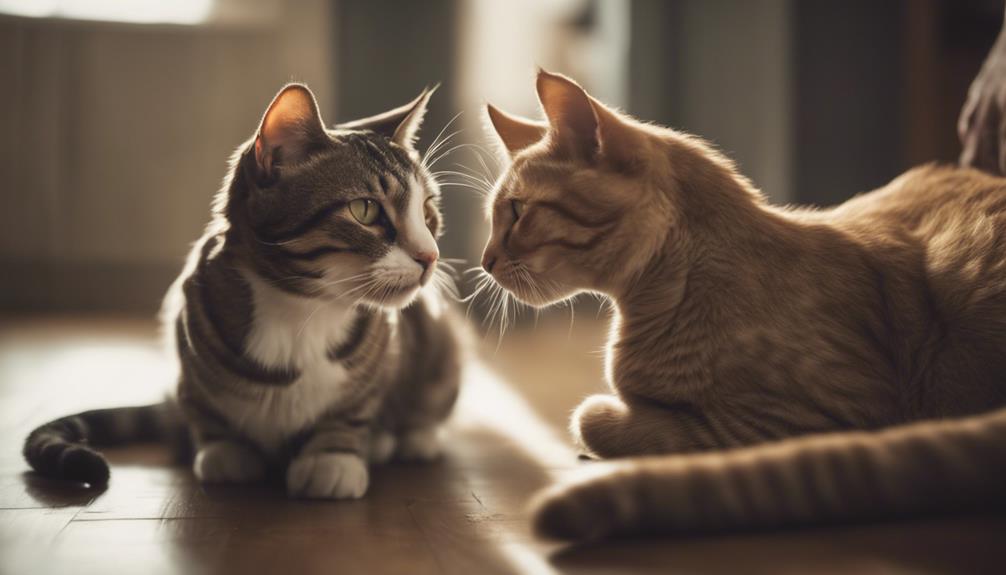
Socializing cats can lead to a reduction in aggressive behavior, making interactions with humans and other pets more harmonious. This process can also help strengthen the bond between the cat and its human companions.
Aggression Reduction
One effective method for reducing aggressive behavior in cats is through proper socialization techniques. By implementing strategies such as positive reinforcement and behavior modification, cat owners can effectively manage their pet's aggression. Training techniques play a crucial role in shaping a cat's behavior towards a more sociable and non-aggressive demeanor. Through consistent socialization efforts, cats can learn appropriate ways to interact with humans and other animals, decreasing the likelihood of aggressive outbursts. The table below highlights some key benefits of socializing cats to reduce aggression:
| Benefits of Socializing Cats for Aggression Reduction |
|---|
| 1. Increased sociability and playfulness |
| 2. Reduced territorial behavior |
| 3. Improved stress management |
| 4. Enhanced bond with the owner |
| 5. Decreased likelihood of aggressive encounters |
Improved Bonding
Improving the bond between cats and their owners can be achieved through consistent socialization efforts, leading to a stronger and more harmonious relationship. Socializing cats can result in increased trust and decreased anxiety, benefiting both the feline and their human companion. This improved bonding can lead to a more fulfilling and enriching pet ownership experience.
Some key benefits of socializing cats include:
- Enhanced communication between the cat and owner
- Increased levels of affection and playfulness from the cat
- Reduced instances of destructive behavior
- Greater overall satisfaction and companionship for both parties
Techniques for Socialization
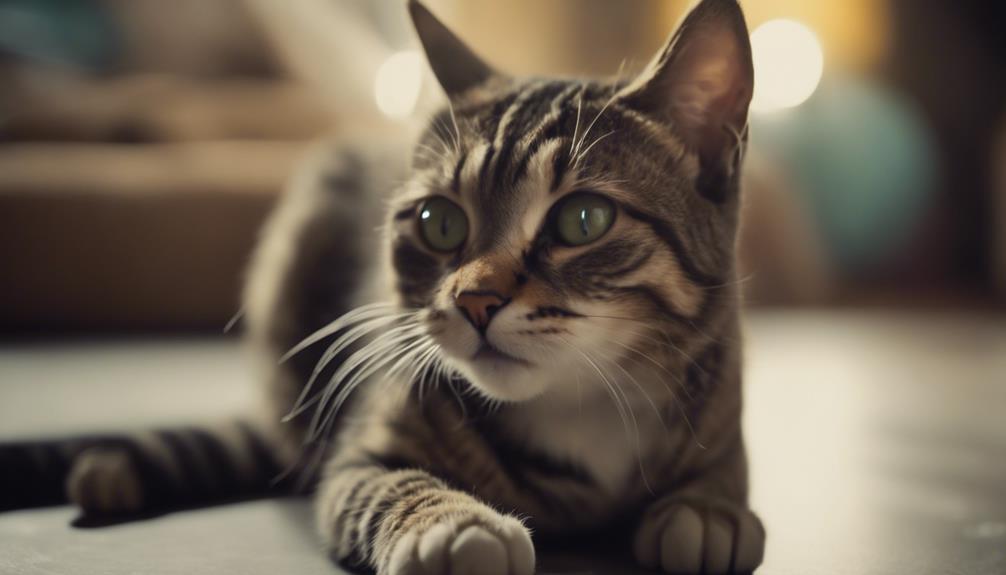
Using positive reinforcement techniques can be highly effective in socializing cats to reduce aggressive behavior. By rewarding desirable behaviors such as calm interactions or gentle play, cats can learn to associate positive experiences with socializing, ultimately decreasing their aggression levels. Here is a table highlighting some key techniques for socializing cats:
| Technique | Description | Example |
|---|---|---|
| Playtime Rewards | Rewarding social behavior with play sessions | Giving treats after playtime |
| Positive Reinforcement | Reinforcing good behavior with rewards | Clicker training for socialization |
| Safe Space Establishment | Providing a secure area for the cat to retreat to | Creating a cozy hiding spot |
| Gradual Exposure | Slowly introducing the cat to new people or pets | Allowing supervised visits |
| Consistency | Maintaining a regular socialization routine | Daily play sessions |
Implementing these techniques consistently and patiently can help in socializing cats and reducing their aggressive tendencies effectively.
Socializing Kittens Vs. Adult Cats
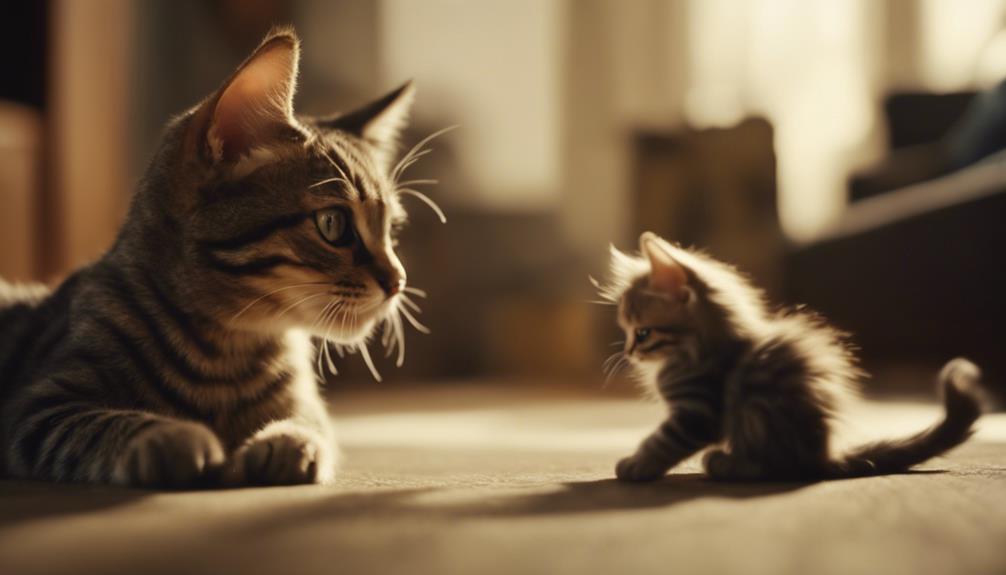
Socializing kittens is generally more successful as they adapt quicker to new environments and experiences.
On the other hand, adult cats may require more patience and time to socialize due to established behaviors and past experiences.
It's crucial to tailor socialization techniques to the age and individual characteristics of the cat to effectively reduce aggressive behavior.
Kittens Adapt Quicker
Kittens generally adapt more quickly to socialization efforts compared to adult cats. This is due to their developmental stage and the critical period for socialization during kittenhood. When focusing on socializing kittens:
- Quick bonding occurs with humans and other animals.
- Kittens tend to be more receptive to new experiences and environments.
- Socialization benefits include reduced fear and increased confidence.
- Kittens are more likely to form positive associations with handling and grooming.
Understanding these differences can help cat owners tailor their socialization strategies to meet the specific needs of kittens versus adult cats.
Adults Require Patience
Adult cats often require a significant amount of patience when compared to kittens during the socialization process. Patience pays off when working with adult cats as they may have ingrained behaviors that take time to modify. Making gradual progress is key to successfully socializing adult cats. It is essential to understand that each cat is unique, and their background plays a significant role in how they respond to socialization efforts. By approaching the process with patience and respect for the cat's boundaries, individuals can build trust and encourage positive behavioral changes over time.
| Aspect | Kittens | Adult Cats |
|---|---|---|
| Response to change | Quick adaptation | Slow to adapt |
| Trust building | Easier to earn trust | Requires patience |
| Socialization pace | Rapid progress | Progress is gradual |
Socialization Techniques Differ
When comparing the socialization techniques for kittens and adult cats, differences in response to change, trust building, and socialization pace become evident. Kittens are more adaptable to change and open to new experiences, making interactive play and positive reinforcement effective methods for socializing.
On the other hand, adult cats may require more patience and time for trust-building through enrichment activities and a slower introduction to new stimuli. Understanding these differences is crucial in tailoring socialization techniques to suit the age and developmental stage of the cat.
Signs of Improved Behavior

How can one identify signs of improved behavior in socialized cats?
Behavior modification, training techniques, positive reinforcement, and behavior therapy play crucial roles in assessing a cat's development. When a cat is socialized effectively, observable changes in behavior become apparent. Signs of improved behavior may include:
- Increased comfort around humans
- Reduced instances of hissing or swatting
- Enhanced confidence in new environments
- Improved ability to interact positively with other pets
Additionally, a socialized cat may display a greater willingness to:
- Engage in play
- Exhibit more relaxed body language
- Seek out affection from its human companions
These behaviors indicate that the cat has developed trust, feels secure in its surroundings, and is more adaptable to various situations. Monitoring these behavioral cues can help owners gauge the success of the socialization process and make adjustments as needed to further enhance their cat's well-being.
Addressing Aggression Triggers
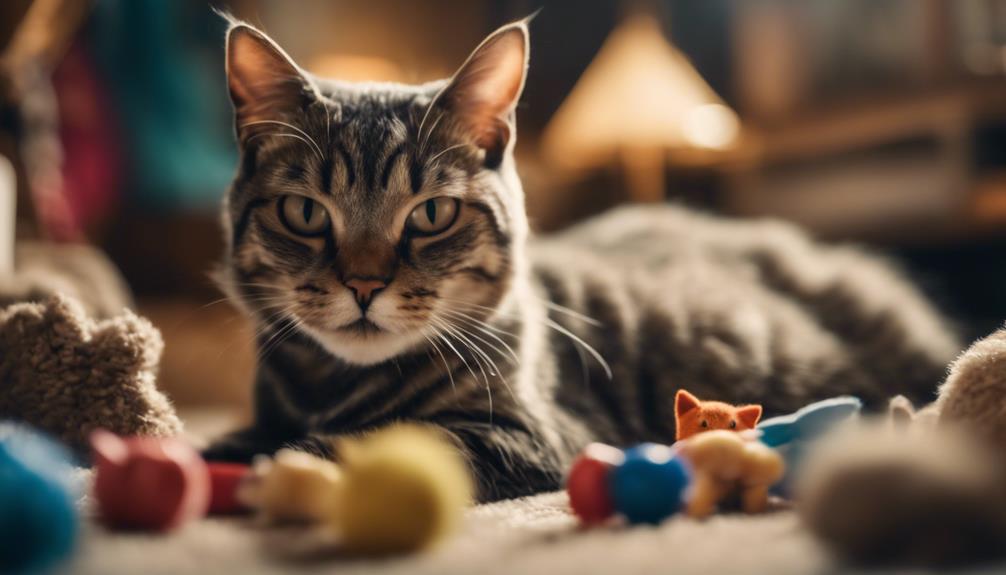
After observing signs of improved behavior in socialized cats, it's essential to address aggression triggers to maintain a harmonious environment for both the cat and its human companions. Identifying and mitigating these triggers can significantly reduce aggressive behaviors and enhance the well-being of the cat.
Here are some key points to consider:
- Aggression Triggers: Understanding what specific situations or stimuli provoke aggressive responses in the cat is crucial for effective intervention.
- Behavioral Therapy: Implementing behavioral therapy techniques can help modify the cat's responses to certain triggers and promote more appropriate behaviors.
- Socializing Techniques: Continuously practicing socializing techniques, such as controlled introductions to new environments or individuals, can desensitize the cat to potential triggers over time.
- Positive Reinforcement: Rewarding desirable behaviors with treats or praise can reinforce positive responses and help the cat associate pleasant experiences with potential triggers.
Consistency in Socialization Efforts
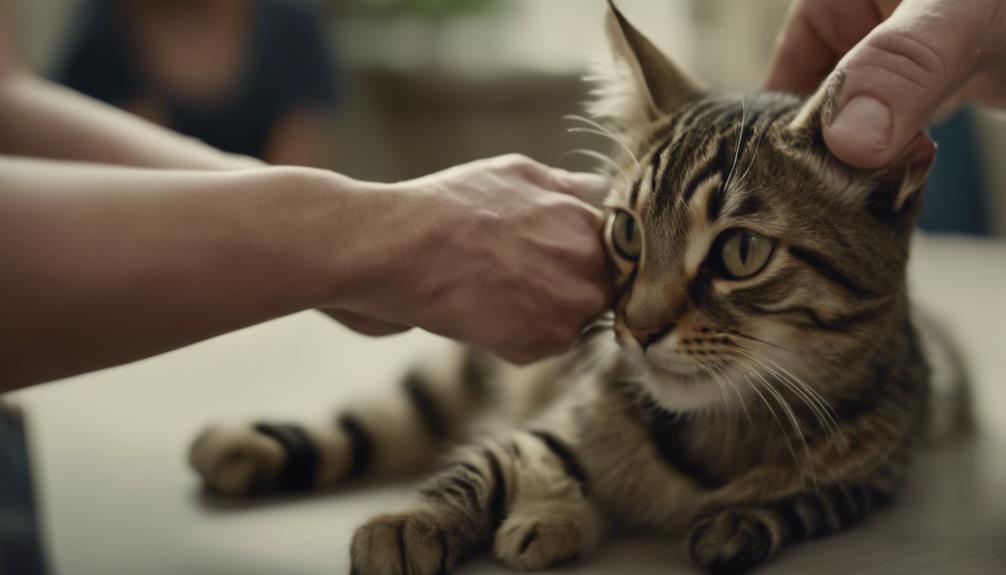
Maintaining a consistent approach to socialization efforts is paramount in fostering long-term positive behavior changes in cats. Consistent reinforcement of desired behaviors helps cats understand what's expected of them, leading to gradual progress in their socialization journey. Cats, like many animals, thrive on routine and predictability. By consistently exposing them to positive social interactions, handling, and new environments, cat owners can reinforce positive behaviors and minimize negative ones.
Research has shown that behavioral changes in cats often require time and patience. Consistency in socialization efforts plays a crucial role in shaping a cat's response to various stimuli. Positive results, such as decreased aggression and increased sociability, are more likely to be achieved when socialization efforts are consistently applied. It's essential for cat owners to understand that socializing a cat is an ongoing process that requires dedication and commitment. By maintaining consistency in their socialization efforts, cat owners can help their feline companions become more well-adjusted and sociable pets.
Frequently Asked Questions
Can Socializing a Cat Eliminate Aggressive Behavior Completely?
Socializing a cat may significantly reduce aggressive behavior, but complete elimination is not guaranteed. Training techniques, behavioral therapy, play therapy, and enrichment activities can all contribute to fostering a more social and less aggressive feline companion.
How Long Does It Typically Take to See Improvements in a Cat's Behavior After Socialization Efforts?
In the realm of behavior modification, training techniques, progress monitoring is crucial. Over time, improvements in a cat's behavior can be observed with consistent efforts. Patience and dedication are key to seeing positive changes.
Are There Any Specific Breeds of Cats That Are More Prone to Aggression and May Benefit More From Socialization?
Certain cat breeds may exhibit higher tendencies toward aggression, making socialization crucial for their behavioral development. Through appropriate socialization techniques, these breeds can learn positive interactions and reduce aggressive tendencies, benefiting greatly from early socialization efforts.
What Should I Do if My Cat Shows Signs of Aggression Despite Socialization Efforts?
When facing feline aggression despite socialization, explore behavior modification and training techniques. Seek professional help from a behavior consultant to address underlying issues. Consistent, patient efforts can help navigate and improve challenging behaviors in cats.
Are There Any Potential Risks or Drawbacks to Socializing a Cat for Reducing Aggression?
Socializing a cat for reducing aggression can have potential risks or drawbacks if not done properly. Training techniques and behavioral therapy, along with supervision and consistent reinforcement, are crucial to ensure positive outcomes and minimize any negative consequences.











